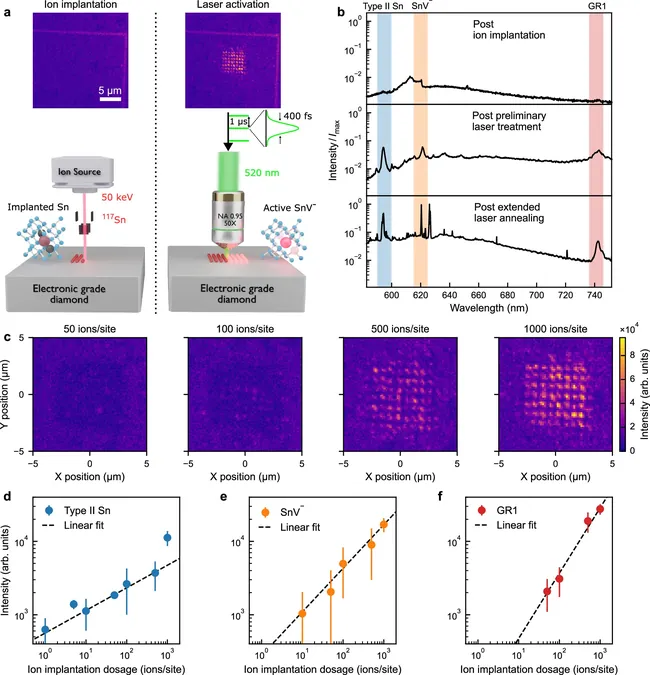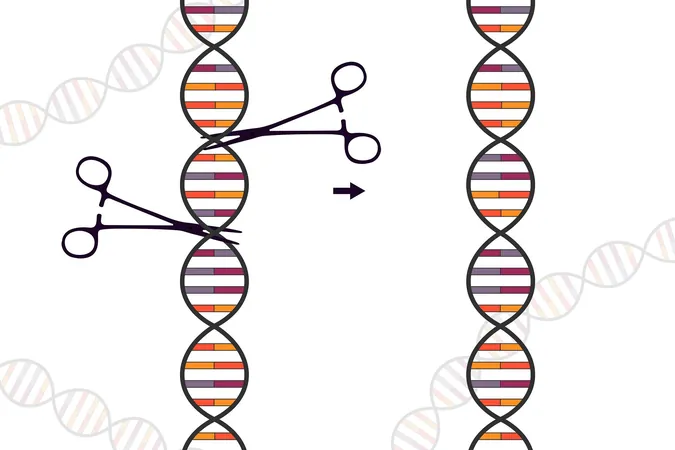
Revolutionary Breakthrough in Quantum Diamonds: Precise Activation of Quantum Defects!
2025-06-12
Author: Michael
Groundbreaking Study Paves the Way for Scalable Quantum Technologies
In an electrifying advancement for the world of quantum materials, a team of researchers from the Universities of Oxford, Cambridge, and Manchester has unveiled a groundbreaking method to precisely engineer single quantum defects in diamonds. This pivotal development, recently published in *Nature Communications*, marks a significant leap toward the future of scalable quantum technologies.
A Wave of Precision in Quantum Engineering
Employing a cutting-edge two-step fabrication technique, the researchers have achieved a first: the ability to create and monitor individual Group-IV quantum defects in diamonds as they're activated. These minuscule defects, or imperfections within the diamond lattice, possess the remarkable capability to store and transmit information through the intriguing principles of quantum physics.
Harnessing the Power of Tin Atoms
By meticulously inserting single tin atoms into synthetic diamonds and employing ultrafast laser technology, this innovative team gained unprecedented control over the placement and activation of these quantum features. This astonishing precision is crucial for the development of extensive quantum networks, which hold the promise of ultra-secure communications and the potential to solve complex problems that are currently beyond our reach.
Real-Time Observation: A Quantum Leap Forward
Professor Jason Smith from Oxford's Department of Materials exclaimed, 'This breakthrough gives us unprecedented control over single tin-vacancy color centers in diamond—a crucial milestone for scalable quantum devices. What excites me most is that we can watch in real time how the quantum defects are formed!'
Connecting Spins and Photons
These diamond defects serve as critical spin-photon interfaces, bridging quantum bits of information encoded in electron spins with particles of light. The tin-vacancy defects belong to the Group-IV color centers, lauded for their symmetrical structures that ensure stability in optical and spin properties—perfect for the demands of quantum networking.
Fine-Tuning at an Atomic Level!
Utilizing a focused ion beam platform, akin to an atomic-scale spray can, the research team precisely directed tin ions into specific positions within the diamond with nanometer-level accuracy—an achievement several magnitudes finer than a human hair's width.
Innovative Laser Techniques for Quantum Creation
To transform implanted tin atoms into functioning tin-vacancy centers, the scientists employed a technique known as laser annealing, which delicately excites localized areas of the diamond without causing damage. This method was further enhanced by real-time spectral feedback, allowing the team to monitor the emerging defects' light and make instant adjustments to the laser, providing unprecedented control over the refinement process.
A Leap Towards Large-Scale Quantum Networks
Dr. Andreas Thurn of Cambridge noted the significance of this in-situ control during defect creation, saying, 'This method not only facilitates efficient activation of quantum emitters with high spatial precision but also opens the door for large-scale quantum networks. Even more exciting, this approach isn’t confined to diamonds; it’s adaptable to other wide-bandgap materials!'
Unlocking New Frontiers in Quantum Defect Studies
Additionally, the researchers have made strides in examining the elusive 'Type II Sn' defect complex, offering critical insights into defect dynamics and formation pathways in diamond.
Looking Ahead: Quantum Applications on the Horizon
Professor Richard Curry from Manchester concluded, 'This work enables the creation of quantum objects on demand through reproducible and scalable methods. It's a crucial step toward developing quantum devices that can revolutionize commercial applications!'
With these revolutionary advancements, the path is set for an exciting future where quantum technologies can seamlessly integrate into our everyday lives.









 Brasil (PT)
Brasil (PT)
 Canada (EN)
Canada (EN)
 Chile (ES)
Chile (ES)
 Česko (CS)
Česko (CS)
 대한민국 (KO)
대한민국 (KO)
 España (ES)
España (ES)
 France (FR)
France (FR)
 Hong Kong (EN)
Hong Kong (EN)
 Italia (IT)
Italia (IT)
 日本 (JA)
日本 (JA)
 Magyarország (HU)
Magyarország (HU)
 Norge (NO)
Norge (NO)
 Polska (PL)
Polska (PL)
 Schweiz (DE)
Schweiz (DE)
 Singapore (EN)
Singapore (EN)
 Sverige (SV)
Sverige (SV)
 Suomi (FI)
Suomi (FI)
 Türkiye (TR)
Türkiye (TR)
 الإمارات العربية المتحدة (AR)
الإمارات العربية المتحدة (AR)